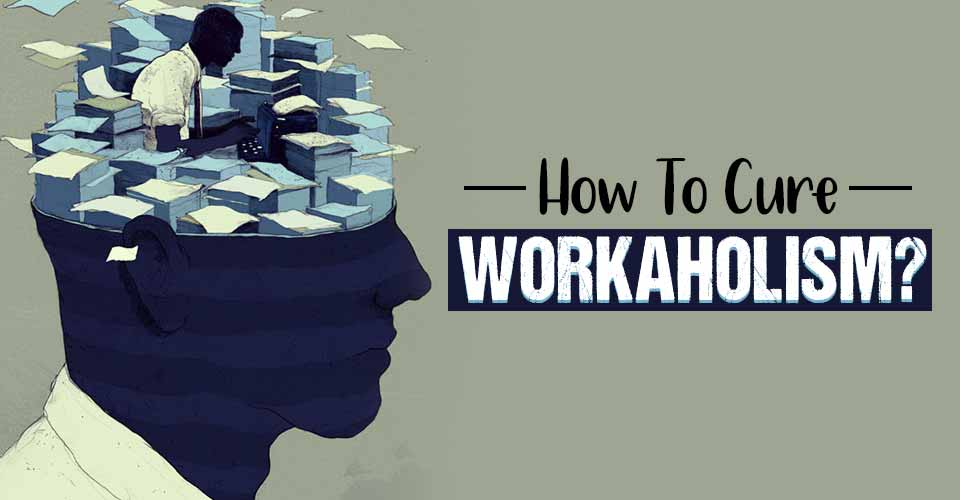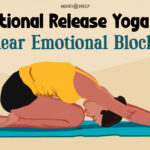Workaholism is a common condition in which people uncontrollably work hard for long hours, severely affecting their physical, mental and social functioning. But, understanding how to cure workaholism can help you manage it in your daily life. The first step towards recovery is acknowledging that you have a work addiction.
Need For Workaholism Treatment
Workaholism is pretty much a vague concept in common perception—so to understand how to cure workaholism, we have to understand the psychology of a workaholic.
In 1971, the term “workaholic” was coined by American psychologist, Wayne Oates 1 Sussman S. (2012). Workaholism: A Review. Journal of addiction research & therapy, Suppl 6(1), 4120. https://doi.org/10.4172/2155-6105.S6-001 , to mean people addicted to work in the same way people are addicted to alcohol. But, over time, psychologists and research scholars have refined this approach, with “workaholism [being] increasingly considered a behavioral addiction.”
Because the condition does not have any specific symptoms, it is not formally recognized as a mental disorder. Despite this denial, research shows that 27% to 30% of the global population are affected by it, with rates of workaholism 2 Spagnoli, P., Molino, M., Molinaro, D., Giancaspro, M. L., Manuti, A., & Ghislieri, C. (2020). Workaholism and Technostress During the COVID-19 Emergency: The Crucial Role of the Leaders on Remote Working. Frontiers in psychology, 11, 620310. https://doi.org/10.3389/fpsyg.2020.620310 skyrocketing after the Covid-19 pandemic.
Because of the vagueness surrounding workaholism, people often confuse it with “hard work”. Work addiction is very different from working hard, because it is a compulsive mental condition that interferes with the everyday functioning of a person’s life and needs medical treatment.
In a workaholic’s psychology 3 Atroszko, P. A., Demetrovics, Z., & Griffiths, M. D. (2020). Work Addiction, Obsessive-Compulsive Personality Disorder, Burn-Out, and Global Burden of Disease: Implications from the ICD-11. International journal of environmental research and public health, 17(2), 660. https://doi.org/10.3390/ijerph17020660 , their ‘irrational’ work habits are normal and so they refuse to correct their pathological behavior. They are mentally and emotionally attached to their work, because of which they find it very difficult to withdraw from it.
When they stay away from work, workaholics tend to experience “withdrawal” symptoms, like guilt, anger, and irritation—leading them to overwork more to compensate for the lost ‘work time’. Their obsession with work deprives them of a fulfilling personal life and good health, and this affects their social relationships.
Objective Of Workaholism Treatment
The objective of workaholic treatment is to address a workaholic’s irrational thoughts about work, modify their work habits, and create more meaningful work-family dynamics. According to a 2018 study 4 Molino, M., Cortese, C. G., & Ghislieri, C. (2018). Daily Effect of Recovery on Exhaustion: A Cross-Level Interaction Effect of Workaholism. International journal of environmental research and public health, 15(9), 1920. https://doi.org/10.3390/ijerph15091920 , addressing workaholism means an honest “psychological detachment [from], relaxation [of], [and] mastery and control” over one’s work-related impulses and aim at a healthy work-life balance.
To cure a workaholic, one has to reorient them in their perceptions of work and help them separate their personal worth from work performance. The faster one acknowledges one’s work addiction, the easier and more effective it gets to treat the disorder.
Workaholism treatment methods can be availed at both individual and organizational levels. While self-help strategies and organizational measures can aid mild cases of job addiction, severe cases require medical treatment from general physicians, psychiatrists, psychologists, occupational therapists, and others.
That being said, clearly defined treatment methods of workaholism do not exist. This is because most of the proposed treatment strategies are theoretical, lacking conceptual and empirical clarity.
Opportunities to test them are also rare due to the obstacles posed to curing workaholism by “the centrality of work in modern society.” Cultural praise for hard work, work’s material benefits, and “workaholics’ denial of their problem [complicate] the implementation of prevention strategies”. “Complete exclusion from work exposure” is also not a practical measure, and so workaholism treatment is largely left to the workaholics’ personal choices.
Diagnosis Of Workaholism
Medical practitioners consider workaholism as a work-related impulse 5 Andreassen, C. S., Griffiths, M. D., Sinha, R., Hetland, J., & Pallesen, S. (2016). The Relationships between Workaholism and Symptoms of Psychiatric Disorders: A Large-Scale Cross-Sectional Study. PloS one, 11(5), e0152978. https://doi.org/10.1371/journal.pone.0152978 control or stress disorder, obsessive-compulsive personality disorder (OCPD), or obsessive-compulsive disorder (OCD).
At the clinical level, diagnosis of work addiction involves defining the border between addictive and non-addictive behavior. According to a 2017 study 6 Keskin G. (2017). Today’s Public Health Issue: Workaholism. Iranian journal of public health, 46(2), 274–275. , it recognizes work-related “preoccupation, mood variability, tolerance, deprivation, interpersonal conflict, and recurrence (relapse)” by using a number of screening instruments, such as:
- Workaholism Battery (WorkBAT 7 Andreassen, Cecilie & Hetland, Jørn & Pallesen, Ståle. (2013). Psychometric assessment of workaholism measures. Journal of Managerial Psychology. 29. 10.1108/JMP-05-2013-0143. )
- Work Addiction Risk Test (WART 8 Ravoux, H., Pereira, B., Brousse, G., Dewavrin, S., Cornet, T., Mermillod, M., Mondillon, L., Vallet, G., Moustafa, F., & Dutheil, F. (2018). Work Addiction Test Questionnaire to Assess Workaholism: Validation of French Version. JMIR mental health, 5(1), e12. https://doi.org/10.2196/mental.8215 )
- Bergen Work Addiction Scale (BWAS 9 Andreassen, Cecilie & Griffiths, Mark & Hetland, Jørn & Pallesen, Ståle. (2012). Development of a work addiction scale. Scandinavian journal of psychology. 53. 265-72. 10.1111/j.1467-9450.2012.00947.x. )
- Bergen Insomnia Scale (BIS 10 Pallesen, S., Bjorvatn, B., Nordhus, I. H., Sivertsen, B., Hjørnevik, M., & Morin, C. M. (2008). A new scale for measuring insomnia: the Bergen Insomnia Scale. Perceptual and motor skills, 107(3), 691–706. https://doi.org/10.2466/pms.107.3.691-706 )
- Dutch Work Addiction Scale (DUWAS 11 Del Líbano, M., Llorens, S., Salanova, M., & Schaufeli, W. (2010). Validity of a brief workaholism scale. Psicothema, 22(1), 143–150. )
- Heavy-Work Investment (HWI 12 Mazzetti, G., Guglielmi, D., & Schaufeli, W. B. (2020). Same Involvement, Different Reasons: How Personality Factors and Organizations Contribute to Heavy Work Investment. International journal of environmental research and public health, 17(22), 8550. https://doi.org/10.3390/ijerph17228550 )
- Workaholism Facet-Based Scale (WFBS 13 Shkoler, O., Rabenu, E., Vasiliu, C., Sharoni, G., & Tziner, A. (2017). Organizing the Confusion Surrounding Workaholism: New Structure, Measure, and Validation. Frontiers in psychology, 8, 1803. https://doi.org/10.3389/fpsyg.2017.01803 )
- Swedish Demand–Control–Support Questionnaire (DCSQ 14 Sanne, B., Torp, S., Mykletun, A., & Dahl, A. A. (2005). The Swedish Demand-Control-Support Questionnaire (DCSQ): factor structure, item analyses, and internal consistency in a large population. Scandinavian journal of public health, 33(3), 166–174. https://doi.org/10.1080/14034940410019217 )
- Effort–Reward Imbalance Questionnaire (ERIQ 15 Ren, C., Li, X., Yao, X., Pi, Z., & Qi, S. (2019). Psychometric Properties of the Effort-Reward Imbalance Questionnaire for Teachers (Teacher ERIQ). Frontiers in psychology, 10, 2047. https://doi.org/10.3389/fpsyg.2019.02047 )
- Maslach Burnout Inventory-General Survey (MBI-GS 16 Choi, Y. G., Choi, B. J., Park, T. H., Uhm, J. Y., Lee, D. B., Chang, S. S., & Kim, S. Y. (2019). A study on the characteristics of Maslach Burnout Inventory-General Survey (MBI-GS) of workers in one electronics company. Annals of occupational and environmental medicine, 31, e29. https://doi.org/10.35371/aoem.2019.31.e29 )
- General Health Questionnaire-28 (GHQ-28 17 Hjelle, E. G., Bragstad, L. K., Zucknick, M., Kirkevold, M., Thommessen, B., & Sveen, U. (2019). The General Health Questionnaire-28 (GHQ-28) as an outcome measurement in a randomized controlled trial in a Norwegian stroke population. BMC psychology, 7(1), 18. https://doi.org/10.1186/s40359-019-0293-0 )
A doctor or therapist may ask certain questions to the sufferer about their work habits to better understand their thoughts and emotions related to work. The healthcare professional may also look into the workaholic’s medical and family history to determine if their thoughts and behaviors are caused by any underlying medical or psychological conditions.
Over the past few years, several screening instruments 18 Andreassen, C. S., Pallesen, S., & Torsheim, T. (2018). Workaholism as a Mediator between Work-Related Stressors and Health Outcomes. International journal of environmental research and public health, 15(1), 73. https://doi.org/10.3390/ijerph15010073 has been formulated to identify work addiction and help develop innovative treatment methods.
Read More About Obsessive-Compulsive Disorder (OCD) Here
Treating Workaholism
The first step towards addressing and treating workaholism involves recognizing your workaholic habits. Break your work addiction and separate your sense of personal worth 19 Durand-Moreau, Q., LE Deun, C., Lodde, B., & Dewitte, J. D. (2018). The framework of clinical occupational medicine to provide new insight for workaholism. Industrial health, 56(5), 441–451. https://doi.org/10.2486/indhealth.2018-0021 from work performance. A 2021 study 20 Cossin, T., Thaon, I., & Lalanne, L. (2021). Workaholism Prevention in Occupational Medicine: A Systematic Review. International journal of environmental research and public health, 18(13), 7109. https://doi.org/10.3390/ijerph18137109 elaborates on workaholism treatment in three steps –
- The first step includes direct measures in the workplace
- The second step is individual care
- The third step involves seeking medical help
The best ways to cure workaholism include:
1. Workaholic Therapy
Though it doesn’t have its own specifically designed therapy, workaholism can be addressed 21 Loscalzo, Y., & Giannini, M. (2017). Clinical conceptualization of workaholism. Organizational Psychology Review, 7(4), 306-329. https://doi.org/10.1177/2041386617734299 by therapies used to treat stress and compulsive disorders. Research 22 Malinowska, D., Staszczyk, S., & Tokarz, A. (2015). Pracoholizm – wskazania dotyczące diagnozy oraz przegląd działań interwencyjnych [Workaholism – indications for diagnosis and review of interventions]. Medycyna pracy, 66(1), 71–83. shows that such therapies increase empathy, psychological resilience, relaxation, and positive thinking in people addicted to work.
Treating workaholism involves therapies like:
1. Cognitive behavioral therapy (CBT)
Cognitive behavioral therapy is a behavioral intervention used to reduce symptoms of various mental health conditions, like stress, depression, etc. Studies 23 Hofmann, S. G., Asnaani, A., Vonk, I. J., Sawyer, A. T., & Fang, A. (2012). The Efficacy of Cognitive Behavioral Therapy: A Review of Meta-analyses. Cognitive therapy and research, 36(5), 427–440. https://doi.org/10.1007/s10608-012-9476-1 show that one-on-one sessions 24 Magill, M., Tonigan, J. S., Kiluk, B., Ray, L., Walthers, J., & Carroll, K. (2020). The search for mechanisms of cognitive behavioral therapy for alcohol or other drug use disorders: A systematic review. Behaviour research and therapy, 131, 103648. https://doi.org/10.1016/j.brat.2020.103648 or ‘workplace group’ CBT sessions can reduce the psychological effects of workaholism, like perfectionism, procrastination 25 Steinert, C., Heim, N., & Leichsenring, F. (2021). Procrastination, Perfectionism, and Other Work-Related Mental Problems: Prevalence, Types, Assessment, and Treatment-A Scoping Review. Frontiers in psychiatry, 12, 736776. https://doi.org/10.3389/fpsyt.2021.736776 , etc.
One 2003 study 26 Quinn M. M. (2003). Occupational health, public health, worker health. American journal of public health, 93(4), 526. https://doi.org/10.2105/ajph.93.4.526 shows how behavior-based safety programs are increasingly used to treat work addiction.
Read More About Cognitive Behavioral Therapy (CBT) Here
2. Family therapy
Family therapy is a type of therapy 27 Varghese, M., Kirpekar, V., & Loganathan, S. (2020). Family Interventions: Basic Principles and Techniques. Indian journal of psychiatry, 62(Suppl 2), S192–S200. https://doi.org/10.4103/psychiatry.IndianJPsychiatry_770_19 where the family as a group avails therapy to help with psycho-social problems 28 Jiménez, L., Hidalgo, V., Baena, S., León, A., & Lorence, B. (2019). Effectiveness of Structural⁻Strategic Family Therapy in the Treatment of Adolescents with Mental Health Problems and Their Families. International journal of environmental research and public health, 16(7), 1255. https://doi.org/10.3390/ijerph16071255 . Studies 29 Ahluwalia, H., Anand, T., & Suman, L. N. (2018). Marital and family therapy. Indian journal of psychiatry, 60(Suppl 4), S501–S505. https://doi.org/10.4103/psychiatry.IndianJPsychiatry_19_18 show that family therapy in workaholism can be used to address how work addiction affects family life, solve family-work conflict 30 Hauk, M., & Chodkiewicz, J. (2013). The role of general and occupational stress in the relationship between workaholism and work-family/family-work conflicts. International journal of occupational medicine and environmental health, 26(3), 383–393. https://doi.org/10.2478/s13382-013-0087-1 , and help the workaholic maintain a healthy work-life balance 31 Sheidow, A. J., Henry, D. B., Tolan, P. H., & Strachan, M. K. (2014). The Role of Stress Exposure and Family Functioning in Internalizing Outcomes of Urban Families. Journal of child and family studies, 23(8), 1351–1365. https://doi.org/10.1007/s10826-013-9793-3 .
3. Rational emotive behavior therapy (REBT)
Rational emotive behavior therapy (REBT) is therapy 32 Iftene, F., Predescu, E., Stefan, S., & David, D. (2015). Rational-emotive and cognitive-behavior therapy (REBT/CBT) versus pharmacotherapy versus REBT/CBT plus pharmacotherapy in the treatment of major depressive disorder in youth; a randomized clinical trial. Psychiatry research, 225(3), 687–694. https://doi.org/10.1016/j.psychres.2014.11.021 used to correct irrational beliefs 33 Turner M. J. (2016). Rational Emotive Behavior Therapy (REBT), Irrational and Rational Beliefs, and the Mental Health of Athletes. Frontiers in psychology, 7, 1423. https://doi.org/10.3389/fpsyg.2016.01423 and negative thought patterns in behavioral disorders. For workaholism, REBT can be used to identify work-related irrational beliefs, address workaholic withdrawal symptoms, and change perspectives of work.
This therapy can also be used in occupational risk management practices in corporations to address their employees’ work addiction. One 2017 study 34 Ogbuanya, T. C., Eseadi, C., Orji, C. T., Ede, M. O., Ohanu, I. B., & Bakare, J. (2017). Effects of rational emotive occupational health therapy intervention on the perceptions of organizational climate and occupational risk management practices among electronics technology employees in Nigeria. Medicine, 96(18), e6765. https://doi.org/10.1097/MD.0000000000006765 shows how REBT improves work environment, organizational efficiency, and lower work stress.
4. Metacognitive therapy
Metacognitive therapy (MCT) is a form of psychotherapy used to address anxiety and attention problems. MCT used for workaholics addresses work-related stress 35 Normann, N., & Morina, N. (2018). The Efficacy of Metacognitive Therapy: A Systematic Review and Meta-Analysis. Frontiers in psychology, 9, 2211. https://doi.org/10.3389/fpsyg.2018.02211 and increases mindfulness 36 Wells, A., Capobianco, L., Matthews, G., & Nordahl, H. M. (2020). Editorial: Metacognitive Therapy: Science and Practice of a Paradigm. Frontiers in psychology, 11, 576210. https://doi.org/10.3389/fpsyg.2020.576210 .
Research 37 Andreassen C. S. (2014). Workaholism: An overview and current status of the research. Journal of behavioral addictions, 3(1), 1–11. https://doi.org/10.1556/JBA.2.2013.017 shows that MCT in workaholism treatment is preferred for its “feasibility, time and cost-effectiveness and sustainability”. One 2021 study 38 De Dominicis, S., Troen, M. L., & Callesen, P. (2021). Metacognitive Therapy for Work-Related Stress: A Feasibility Study. Frontiers in psychiatry, 12, 668245. https://doi.org/10.3389/fpsyt.2021.668245 claimed that workaholics showed improvements in work-related stress symptoms and in general mental health, just after 8–10 sessions of metacognitive therapy.
5. Workaholic support group
Workaholics must use therapies that help them reassess their life priorities, reduce work duration, and engage in fulfilling leisure time. Studies show that signs of workaholism can be improved by availing self-help group support programs related to art therapy 39 Regev, D., & Cohen-Yatziv, L. (2018). Effectiveness of Art Therapy With Adult Clients in 2018-What Progress Has Been Made?. Frontiers in psychology, 9, 1531. https://doi.org/10.3389/fpsyg.2018.01531 , music and drama therapy 40 Stuckey, H. L., & Nobel, J. (2010). The connection between art, healing, and public health: a review of current literature. American journal of public health, 100(2), 254–263. https://doi.org/10.2105/AJPH.2008.156497 , meditation awareness training 41 Shonin, E., Gordon, W. V., & Griffiths, M. D. (2014). The treatment of workaholism with meditation awareness training: a case study. Explore (New York, N.Y.), 10(3), 193–195. https://doi.org/10.1016/j.explore.2014.02.004 , etc.
2. Medication
Research 42 Pandve, H., & Bhuyar, P. (2008). Need to focus on occupational health issues. Indian journal of community medicine : official publication of Indian Association of Preventive & Social Medicine, 33(2), 132. https://doi.org/10.4103/0970-0218.40888 into occupational 43 D’Auria D. (1995). Occupational medicine. Occupational medicine (Oxford, England), 45(4), 171–172. https://doi.org/10.1093/occmed/45.4.171 and environmental medicine is not well developed. Like therapies, there is no proper medication for workaholism treatment. Medical practitioners sometimes prescribe 44 Pflanz, S. E., & Ogle, A. D. (2006). Job stress, depression, work performance, and perceptions of supervisors in military personnel. Military medicine, 171(9), 861–865. https://doi.org/10.7205/milmed.171.9.861 workaholics medicines used for treating stress or anxiety disorders, like anti-anxiety pills 45 Koutsimani, P., Montgomery, A., & Georganta, K. (2019). The Relationship Between Burnout, Depression, and Anxiety: A Systematic Review and Meta-Analysis. Frontiers in psychology, 10, 284. https://doi.org/10.3389/fpsyg.2019.00284 , antidepressants 46 Maslach, C., & Leiter, M. P. (2016). Understanding the burnout experience: recent research and its implications for psychiatry. World psychiatry : official journal of the World Psychiatric Association (WPA), 15(2), 103–111. https://doi.org/10.1002/wps.20311 , etc.
A 2020 study 47 Baker, B., Kesler, D., & Guidotti, T. (2020). Occupational and Environmental Medicine: Public Health and Medicine in the Workplace. American journal of public health, 110(5), 636–637. https://doi.org/10.2105/AJPH.2020.305625 recommends the use of medication to treat work-related disorders in the sufferers’ family members as well.
3. Recovery Programs
Work addiction does not have specially designed recovery programs or workaholic rehabilitation facilities. But, workaholics can avail programs with certain techniques that help to reduce unpleasant work-related thoughts and increase positive feelings of mindfulness, peace, and social belongingness 48 Prinz, P., Hertrich, K., Hirschfelder, U., & de Zwaan, M. (2012). Burnout, depression and depersonalisation–psychological factors and coping strategies in dental and medical students. GMS Zeitschrift fur medizinische Ausbildung, 29(1), Doc10. https://doi.org/10.3205/zma000780 . These include meditation awareness training (MAT) 49 Van Gordon, W., Shonin, E., Dunn, T. J., Garcia-Campayo, J., Demarzo, M., & Griffiths, M. D. (2017). Meditation awareness training for the treatment of workaholism: A controlled trial. Journal of behavioral addictions, 6(2), 212–220. https://doi.org/10.1556/2006.6.2017.021 , motivational interviewing 50 Bischof, G., Bischof, A., & Rumpf, H. J. (2021). Motivational Interviewing: An Evidence-Based Approach for Use in Medical Practice. Deutsches Arzteblatt international, 118(7), 109–115. https://doi.org/10.3238/arztebl.m2021.0014 , mental health training, etc.
4. Self-Help Strategies
The following self-help coping strategies can guide you in how to stop being a workaholic, initiate recovery, and build healthier work-family relationships:
- Be intentional in your work habits, in and out of work
- Break your addiction to work
- Try communicating openly about your workload with your coworkers, family, and friends
- Try developing healthy eating and sleeping schedules
- Try using financial planning to avoid money problems
- Try spending quality time with loved ones
- Try taking short holidays once in a while
- Try practicing exercise, yoga, and meditation
- Try new hobbies
- Try to do more often activities that make you relaxed and happy
- If needed, ask a medical professional about how to cure your workaholic addiction
Read More About Meditation Here
5. Workplace Measures
Studies 51 Lior, O., Abira, R., & Aviv, W. (2018). Work addiction: An organizational behavior as well as an addictive behavior?. Journal of behavioral addictions, 7(4), 888–891. https://doi.org/10.1556/2006.7.2018.119 show that the work culture of a company influences the working habits of employees. Factors like job demand, work requirements, and reward systems, etc. in industries like healthcare, trade, mining, or IT, can make someone a workaholic. Therefore, it is necessary for companies to cure workaholism for the well-being of their workforce.
At the organizational level, workaholism can be addressed by taking the following steps:
- Try generating monthly or bi-yearly employee feedback 52 Dutheil, F., Charkhabi, M., Ravoux, H., Brousse, G., Dewavrin, S., Cornet, T., Mondillon, L., Han, S., Pfabigan, D., S Baker, J., Mermillod, M., Schmidt, J., Moustafa, F., & Pereira, B. (2020). Exploring the Link between Work Addiction Risk and Health-Related Outcomes Using Job-Demand-Control Model. International journal of environmental research and public health, 17(20), 7594. https://doi.org/10.3390/ijerph17207594 about the work culture, productivity, welfare, etc.
- Try incorporating the suggestions from the feedback incorporate measures
- Try providing employees with balanced and flexible work schedules
- Try incorporating paid holidays and leaves like sick leaves and “mental health days”
- Try providing recovery programs and workshops that focus on employee well-being at the workplace
- Try creating opportunities for employees to engage in interactive extracurricular activities
- Try encouraging employees and employers to maintain a healthy work-life balance
How To Cure A Workaholic
Research 53 Balducci, C., Spagnoli, P., & Clark, M. (2020). Advancing Workaholism Research. International journal of environmental research and public health, 17(24), 9435. https://doi.org/10.3390/ijerph17249435 shows that workaholics find it difficult to address their addiction, mostly because their work is very central to their being and they are constantly in a state of denial about their work addiction.
Like any other recovery, curing workaholism is not easy. The recovery process can be tough for both the workaholic and his/her close ones and it requires plenty of patience, psychological resilience, understanding and time.
If you know someone suffering from workaholism and wants to help them, try considering the following suggestions:
1. Educate Yourself About The Condition
Read about the condition and learn useful tips on how to cure workaholism. Thoroughly know the symptoms and possible treatment methods before initiating a conversation with the workaholic.
2. Initiate The Conversation
Try talking openly and non-judgmentally with the workaholic about their workaholic personality disorder. Be gentle and try making them understand that they are overworking themselves.
3. Spend Time With Them
Try being an active participant in the recovery process by breaking their addiction to work. Spend leisure time and holidays with them. Encourage them to develop hobbies and take to activities that make them happy.
4. Encourage Them To Practise Exercise
Try encouraging them to practice physical activities that develop mindfulness, peace, and belongingness. Exercise, yoga, hiking, etc. can help cure workaholism.
5. Help Them Avail Therapy
Encourage them to seek professional therapy and medication. Be patient, kind, and understanding throughout the healing process.
Takeaway
Workaholism may not be a formally recognized medical condition, but it is a very common one. If left untreated, it can easily interfere with a person’s health and quality of life. Workaholics can easily avail effective techniques about how to cure workaholism. These strategies usually mean therapies, medication, recovery programs, and self-help techniques.
How To Cure Workaholism At A Glance
- Workaholism is not a medically recognized condition, but it is a common addiction.
- If untreated, it can negatively impact the workaholic’s health, life, and career.
- Workaholism treatment does not have specific methods or medicines.
- It can be treated with techniques that aim at maintaining a healthy work-life balance.
- The best ways how to cure workaholism include therapies, medication, and self-help techniques.
Frequently Answered Questions (FAQs)
1. Can a workaholic change?
Yes, a workaholic can change over time by treating workaholism. They can change his/her perspectives about work and also avail some self-help methods to cure their work addiction.
2. Is workaholism a mental illness?
Workaholism is not a formally recognized mental illness. But, it is a common addiction or behavioral disorder like alcoholism, gambling, online gaming, sex addiction, etc.
3. Are workaholics narcissists?
Workaholics are narcissists when they display traits of narcissism, like imperfectionism, impatience, competitiveness, and compulsion. Narcissistic workaholics also tend to control and manipulate people for their own gains like promotions, etc.
4. What is the difference between a hard worker and a workaholic?
Hard workers are dedicated workers who stay within the parameters of job requirements. Workaholics work out of compulsion, as they are emotionally attached to their work. They overdo projects and work on holidays, unlike hard workers who enjoy a balanced work-life relationship.















